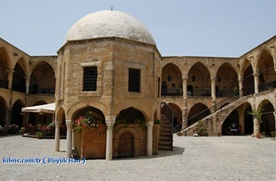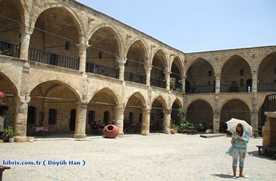Great Inn - Nicosia
|
|||
One of the most important architectural works of the Ottoman period , the Buyuk Han (The Great Inn) is located in the traditional market centre within the City Walls. . The Han, which was built to provide accommodation for travellers from Anatolia and other parts of Cyprus was originally named "Alanyalilar's Han". Later when a new inn, the Kumarcilar Han (Gamblers' Inn) was built nearby in the 17th century, as a result of the comparison made by the public between the two Hans, it was referred to as the Buyuk Han (Big Inn or Great Inn). The Han is similar to all the other Hans which can be found in the city centres of various Anatolian cities, although the Buyuk Han is unusual in having two entrances. It is worth noting, however, that there is a specially strong resemblance between the Buyuk Han and the Koza (Cacoon) Han in Bursa, Turkey which was built around 1490. Externally, the Han resembles a fortress. Indeed during the old colonial days , the British used the Han as Nicosia Central Prison. The windows of Hans were always high up, partially to deter marauders who saw the rich merchants staying at the Han as a sources of easy riches, and partially because glass was very expensive. The square planned, two storey Buyuk Han consists of 68 rooms which open to the vaulted galleries surrounding a square planned inner courtyard and 10 shops which open to the outside of the Han. An Ottoman Mesjid stands on marble piers, with a fountain beneath it in the centre of the courtyard. The Buyuk Han has two entrances, east and west. The rooms on the ground floor each have a low-arched door, an arched window and a hearth. These rooms were originally used as shops, store rooms and offices. At the east side of the Han, to the left of the entrance there is a groin vaulted gallery, and to the right, a barrel vaulted one. |





